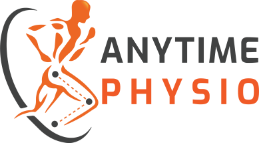
Headaches are a common problem for many people and caused by different triggers. It can be because of stress, eye strain, tiredness, and even trauma. There are also different kinds of headaches, and migraines and cervicogenic headaches are just two examples. While these are relatively common in many individuals, nobody wants to encounter them. If you have been suffering from frequent headaches for a while now and do not know which of the two you are experiencing, this article will tell you how they differ.
Migraines vs Cervicogenic Headaches
A Migraine Attack
When you feel a throbbing pain or a pulsing sensation on one side of your head, you are probably experiencing a migraine. It is a common health condition that has the following symptoms:
- You feel sick and nauseated.
- You have an increased sensitivity to light and sound.
Unlike regular headaches, migraine attacks can last for hours and even days. The pain can be so intense that people with migraines find it challenging to perform their daily activities.
A Cervicogenic Headache
Headaches coming from the neck up to the base of the skull and all the way to the back of the eyes are called cervicogenic headaches. These usually come with a steady and non-throbbing pain, and although it appears to come from the base of the skull, it is a strain that originates from the cervical spine.
This headache is called a secondary headache because another physical issue or illness is typically the cause. Usually, people experience this type of headache because of neck strain or injury.
Some of its symptoms are:
- Pain on one side of the face or head
- Pain coming from specific neck postures or movements
- Pain around the eyes, in the neck, shoulder, or arm
- A stiff neck or reduced range of motion in the neck
- Nausea
- Blurred vision
A cervicogenic headache can last from one hour to one week.
How to Treat Them
Migraines are often undiagnosed and untreated headaches, but there are ways to prevent them from coming back. A change in lifestyle, combined with self-help remedies, can usually do the trick. Some also take medicines prescribed by their doctors.
For cervicogenic headaches, the treatment depends on the person’s condition and the severity of their symptoms. The purpose of the treatment is to remove the cause of pain. It can include medications, physical therapy, home remedies, nerve blocking, and neuromodulation.
Physiotherapy management can also aid people who often experience these two types of headaches. This treatment can fix the underlying postural dysfunctions or musculoskeletal symptoms, giving patients the immediate relief they need to resume daily tasks.
Conclusion
The better you understand what kind of pain you are going through, the easier it will be to find a solution. Migraines and cervicogenic headaches are intense headaches that can cause extreme discomfort and pain, but they are different in terms of symptoms and causes.
You can consult with your doctor for an effective assessment, or you could go to a physiotherapist for specialized care. Remember, you need to identify what triggers your headaches, and you can only do so with the help of a professional.
If you need a rehabilitation treatment technique to ease your pain from headaches or migraine attacks, visit us at Anytime Physio. We are one of Brisbane’s most affordable physiotherapy clinics, with advanced and evidence-based methods of treating and preventing these attacks from occurring. Book an assessment with one of our qualified physiotherapists today.

